
Alta is about equidistant between the North Pole and Berlin. The area around Alta held the Nazi’s largest naval base outside of Germany during World War II.
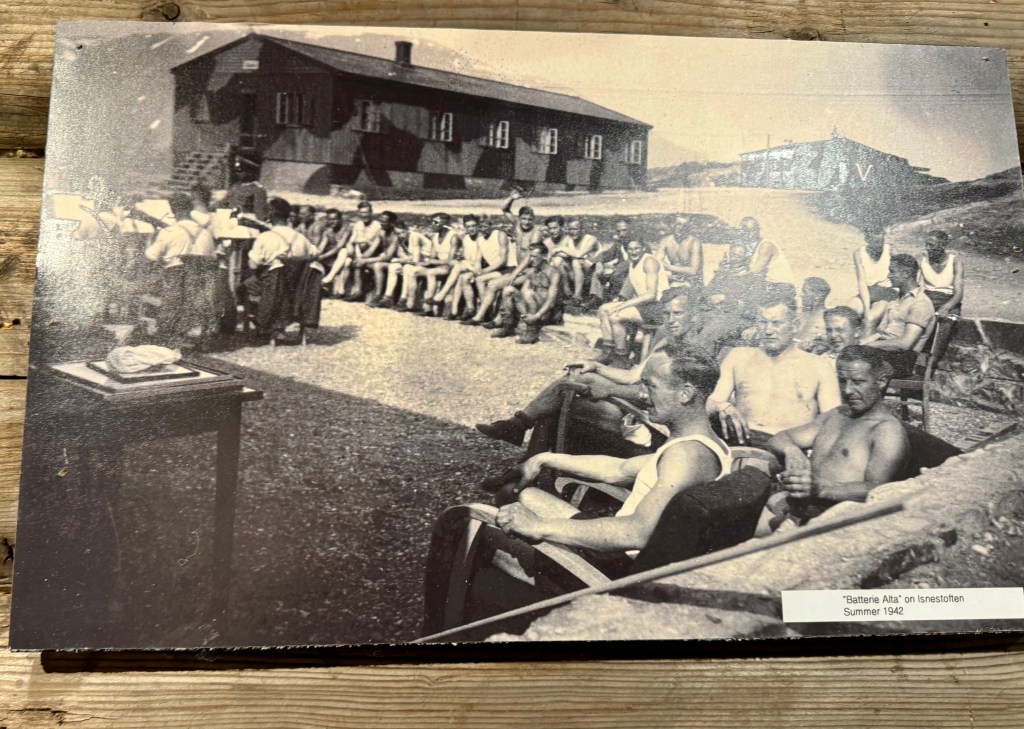
Many thousands of German soldiers were in Alta.

There was even a local stalag for Russian prisoners of war. Stalag 330 held prisoners from 1941 – 1945.

Women at Ravensbruk Concentration Camp were forced to weave insulating straw boots for German soldiers to protect their feet from the cold.
Germany felt pressure from an alliance between Finland and Russia and initiated a forced evacuation of the local people around Alta. About 45,000 people were forcibly relocated to the Tromsø area.

The German ship, Tirpitz, was named after a general who helped to modernize the German navy. She was a larger sister ship to the Bismarck. The Tirpitz was a floating city.
After the Bismarck was sunk, Hitler did not want to expose the Tirpitz because of the potential propaganda value to the Allies if it too was sunk.

The Tirpitz was sent to Norway as a deterrent to supply convoys between the western allies and Russia. Her presence pulled allied resources to the Arctic and away from other areas. The ship was more important for what it could have done, than what it actually did.
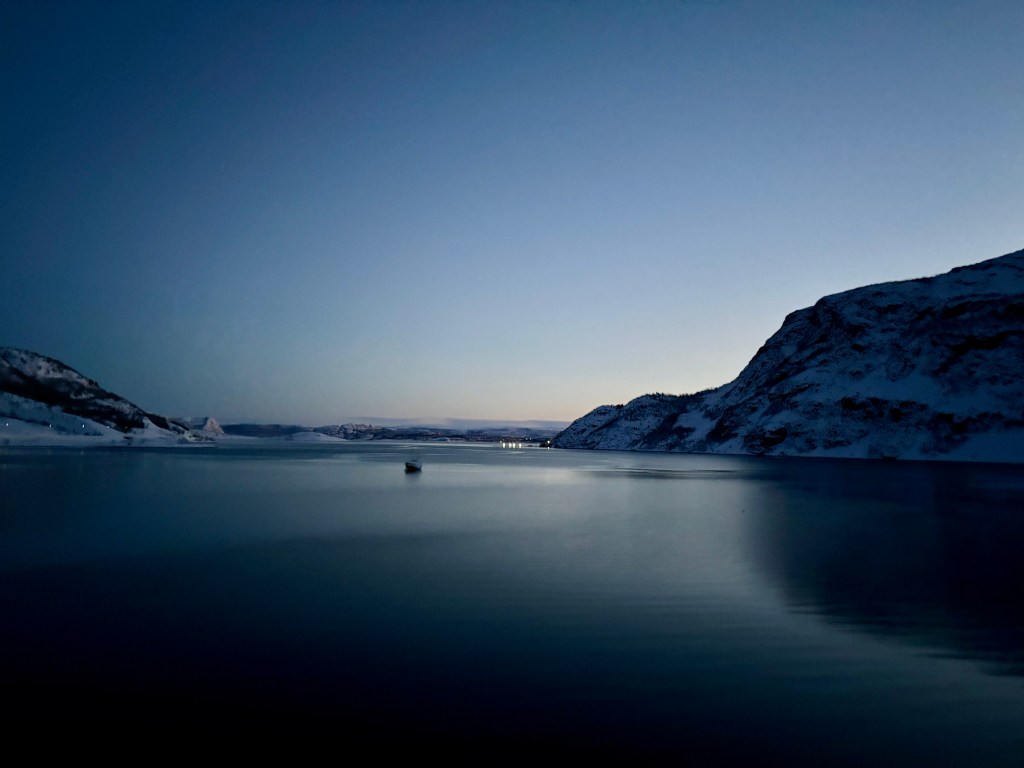
These beautiful bay pictures show where many of the German navy ships were once anchored.
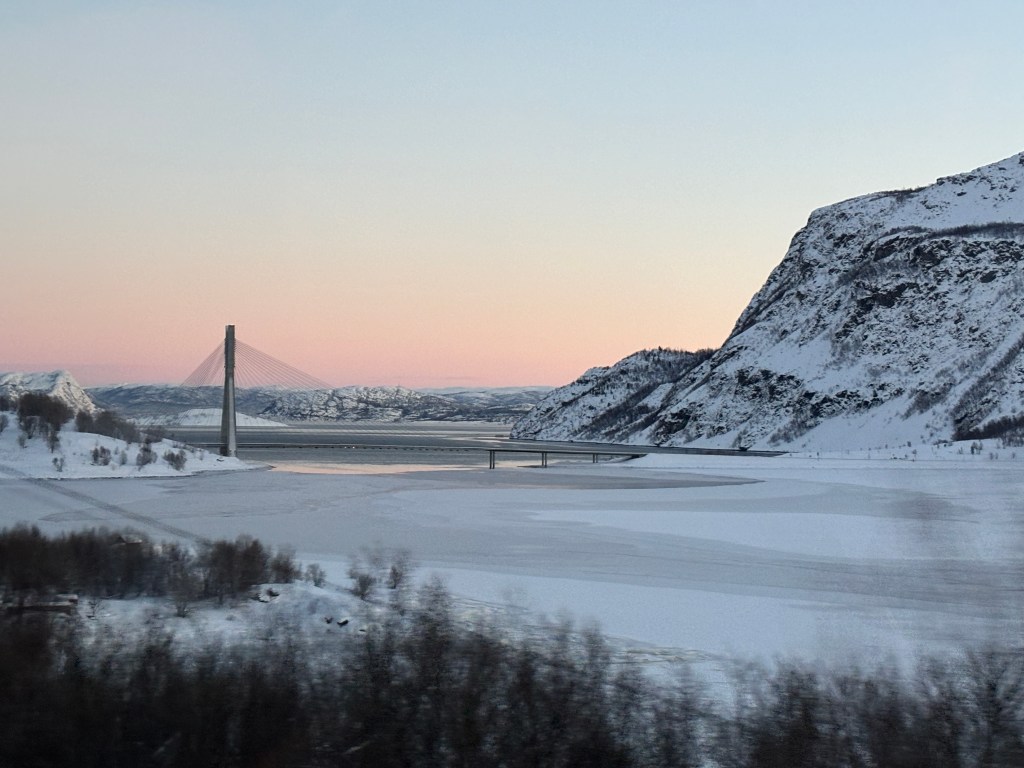
In September 1943, the Royal Navy struck a blow near Alta.
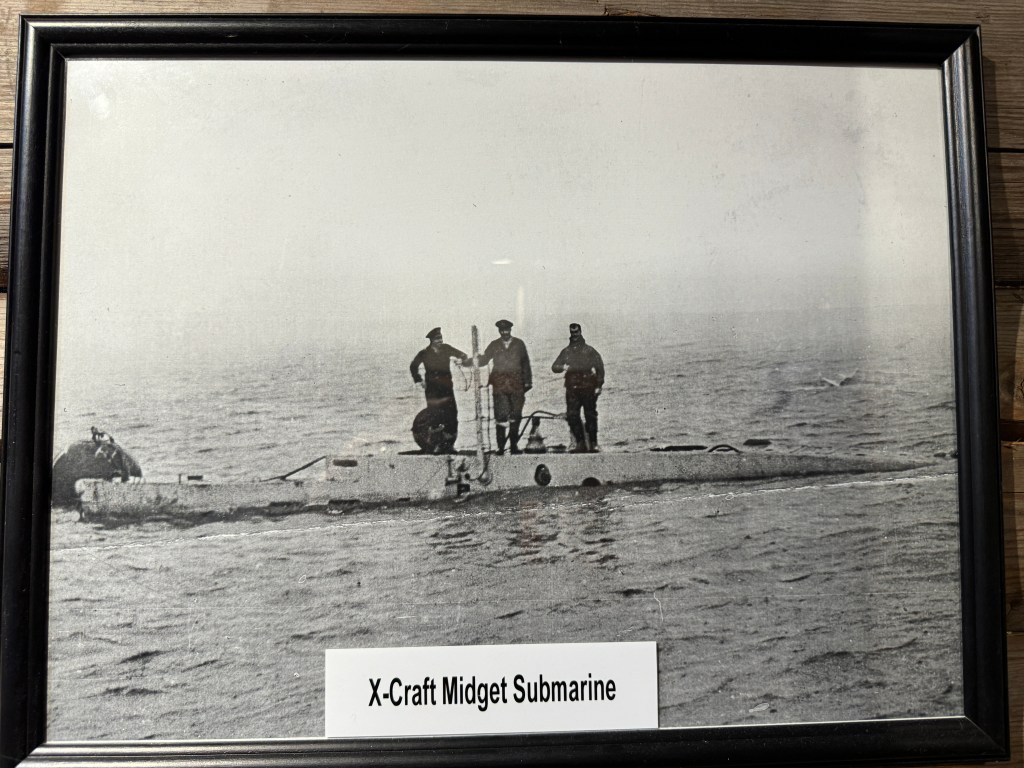
The Tirpitz was damaged by a series of attacks from mini submarines and bombers.
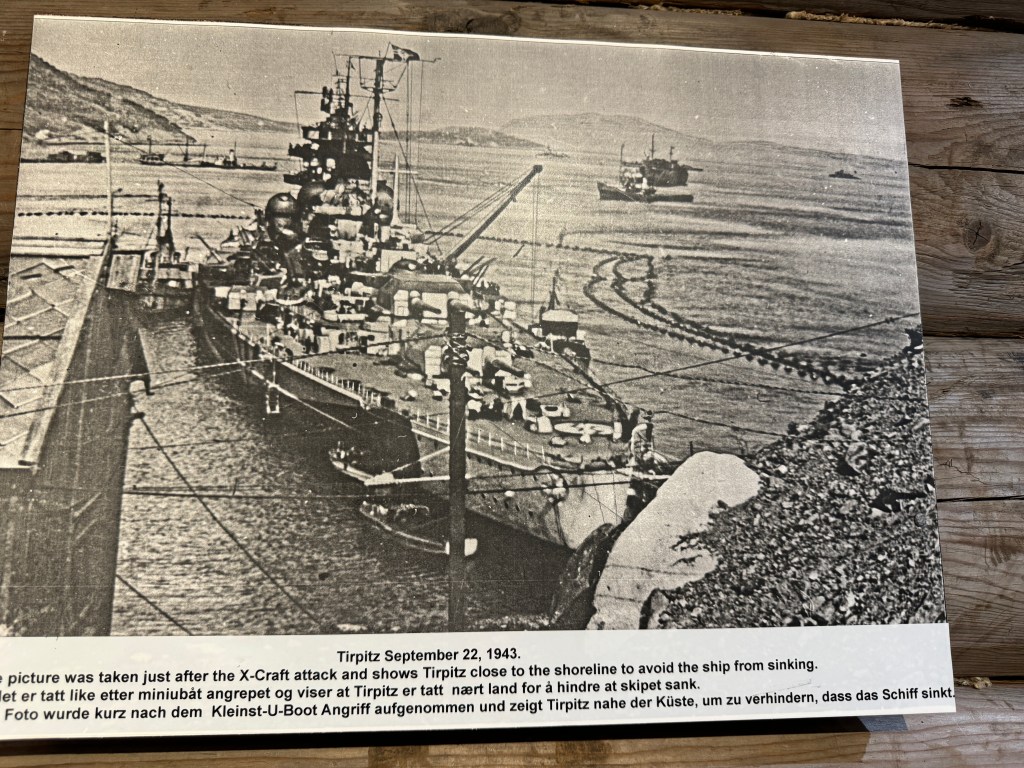
The ship made it to land but was unable to return to Germany for a full overhaul.
The Tirpitz was repaired enough to sail to the Tromsø area to be used as stationery artillery.

The Tripitz was sunk in the Tromsø bay by the Allies in late 1944.
Alta was devastated at the end of the World War II as the Germans instituted as scorched earth policy in the wake of their retreat. They destroyed almost everything including buildings, infrastructure, mines and wells.

Two churches survived the German evacuation destruction. This church was built in 1858.
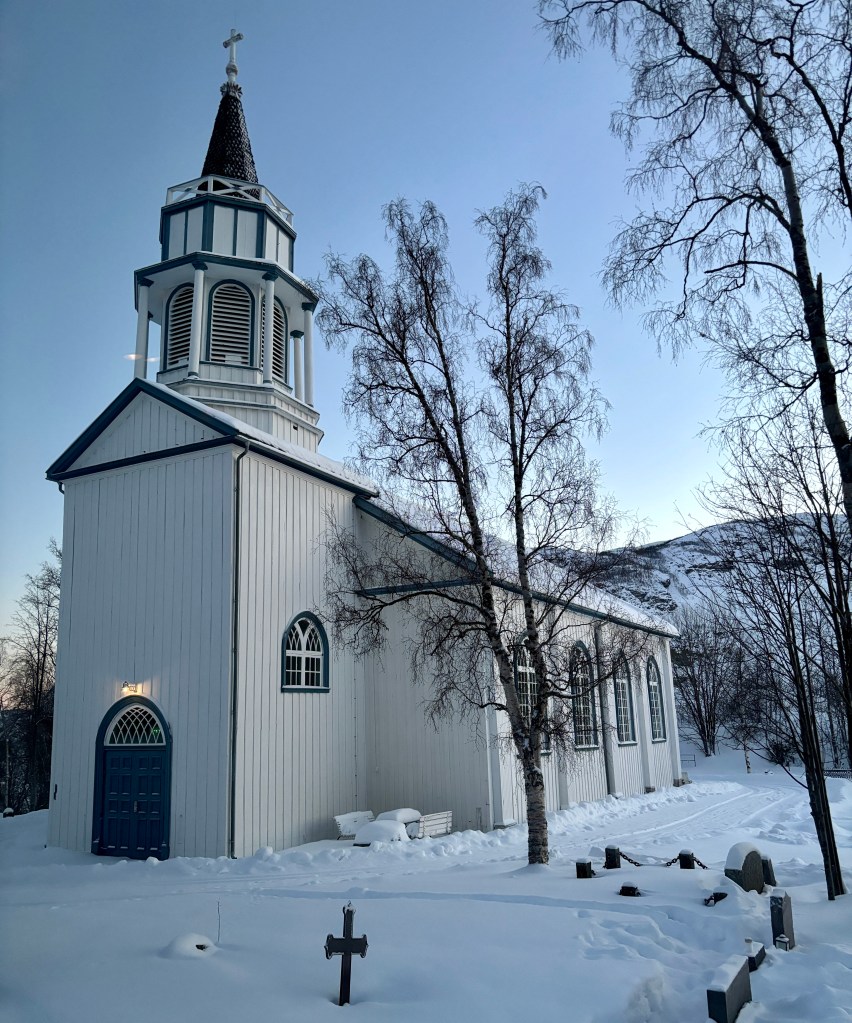
This second church was built in 1937 for the local mining community that once numbered over 1000.

Many miners were Finns and the statue is in memory of them.
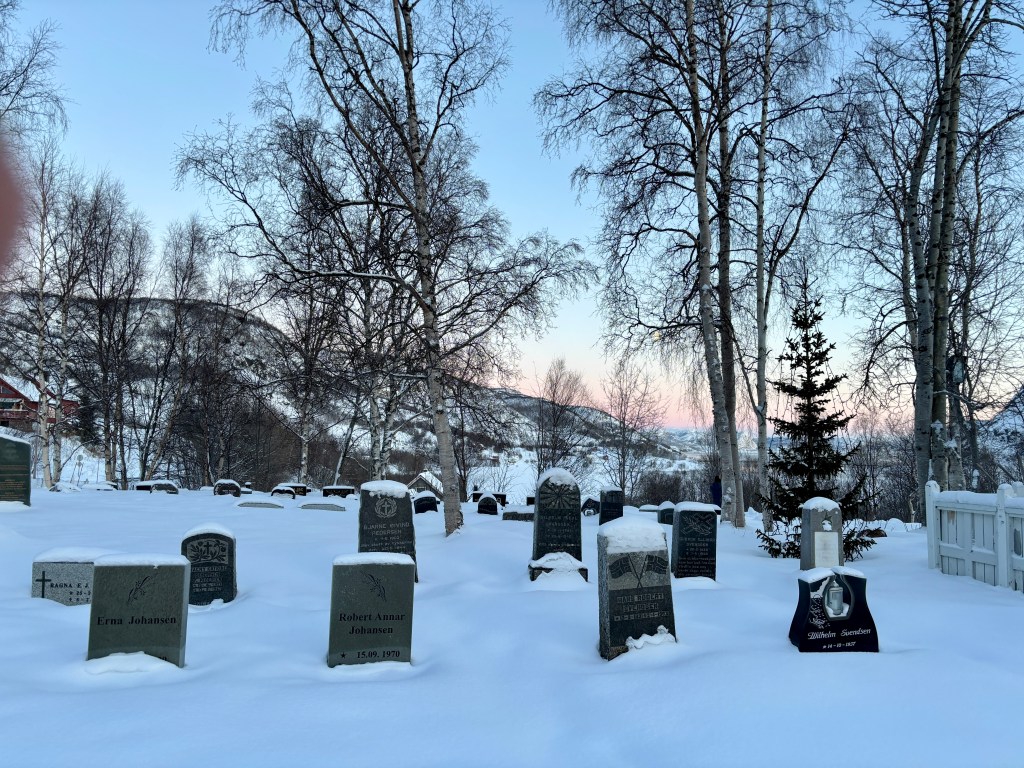
It is not known why these two churches were all that survived the destruction, but it is assumed that a few German soldiers had qualms about destroying churches.
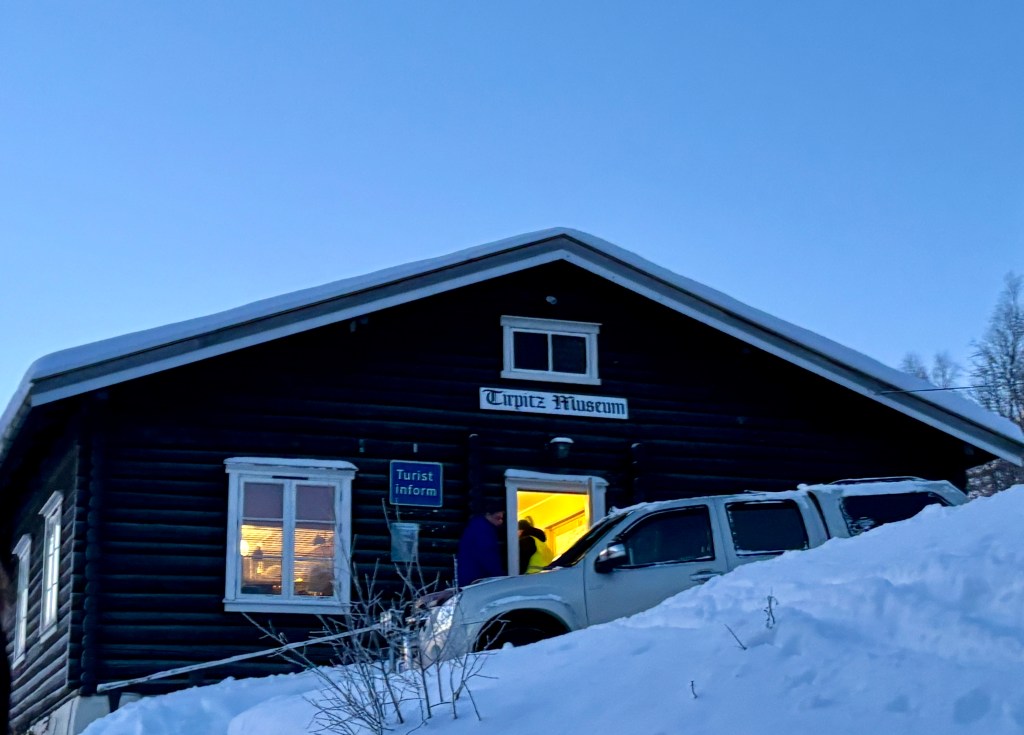
Our tour took us to a museum named for the German battleship Tirpitz. It is housed in a cabin that was originally built in 1888 in southern Norway. The cabin was taken apart and brought to Alta after the war because of the desperate need for buildings.
We began with a film about the Tirpitz from its 1939 beginnings in Germany to its 1944 sinking in Tromsø, Norway.

We saw photographs and artifacts that told the story of German occupation and Norway’s struggle.
We learned that chemicals provided a “smoke screen” for the Tirpitz from the allies above. The chemicals had a decades long effect on tree growth as documented by tree ring data.

This wedding dress was made with silk from a German parachute.
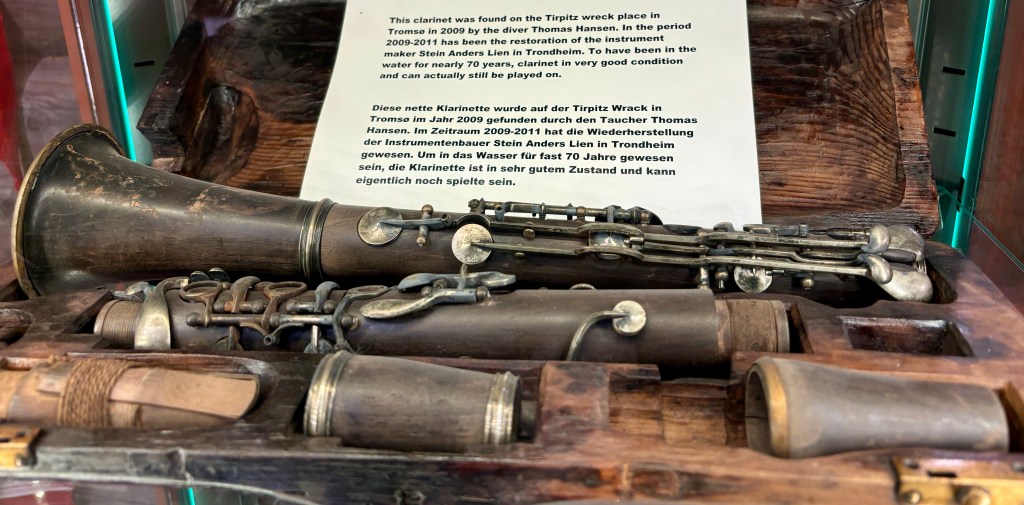
This clarinet was found by divers exploring the Tirpitz wreckage in 2009. Some wreckage is still in Tromsø bay and visible at low tide. One article I read said that it is possible to buy knives made from Tirpitz steel.

We left the museum and headed back towards town. I’m not sure what atmospheric and temperature events were in play to make this part of the bay look feathered but it was cool looking!
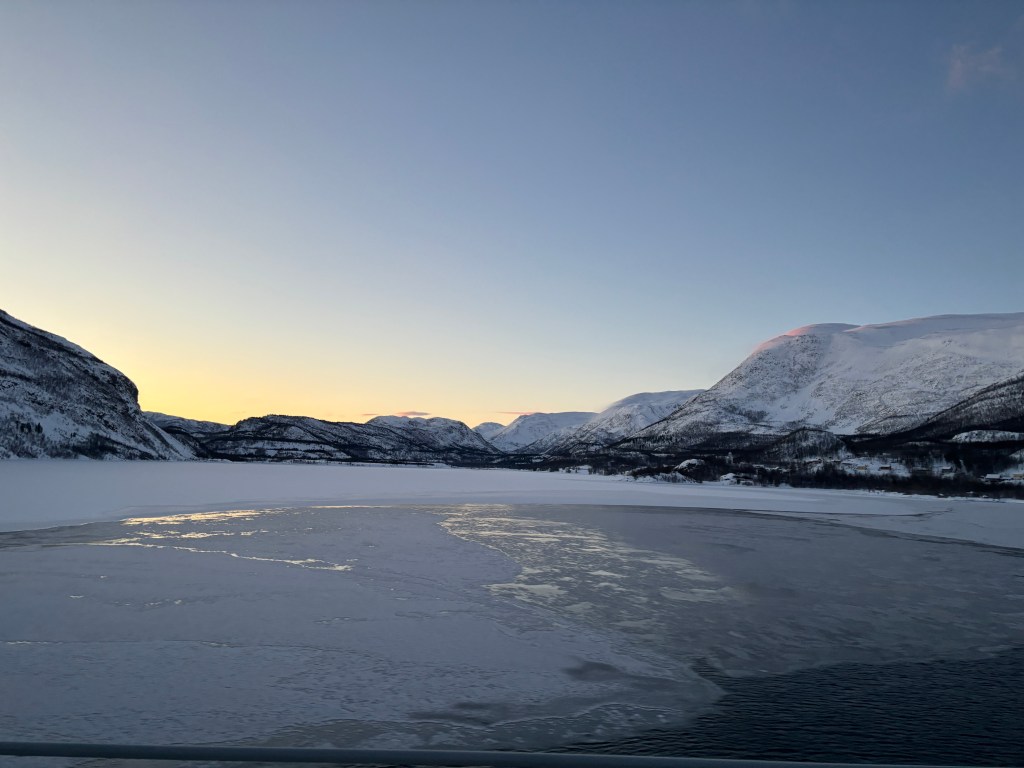
On our way back to the ship, our tour guide (from Ireland) was very excited, and distracted, by the sun being almost visible. (I’m sure I’d be very excited to see the sun too if I hadn’t seen it for two whole months. Living in Phoenix, we get super excited if the summer sun goes behind a cloud once in a while !) He still managed to tell us a few things.
Our guide told us there are 20,000 people in Alta but there is no hospital. The nearest hospital is three hours over land and the road is frequently closed. There is an air ambulance that can fly patients to the nearest hospital or to Tromsø if needed and weather allows.
Alta does have a clinic and a birthing center. The birthing center is only for women having baby number two or more. First time mothers must go (or plan to go) to one of the hospitals outside Alta. Our guide said he found it surprising that a community of 20,000 didn’t have a hospital in a country as wealthy as Norway. I must agree.
Later, we had an afternoon tour around Alta that included a UNESCO World Heritage Site for ancient rock carvings. Randy was still thinking he was done with old things and ancient rock carvings dating back to 4200 BC didn’t dissuade him. It didn’t help that we weren’t actually even going to see the stone engravings because they were covered with snow.

We had seen some near Tromsø anyway.

I went on the tour and went to the Alta Museum. The concentration of carvings are surrounded by the museum. More than 6000 etchings in and around Alta were discovered in 1973. They are believed to be from the Komsa people and include people performing rituals, hunting, and gathering.

There are also animals and symbols.
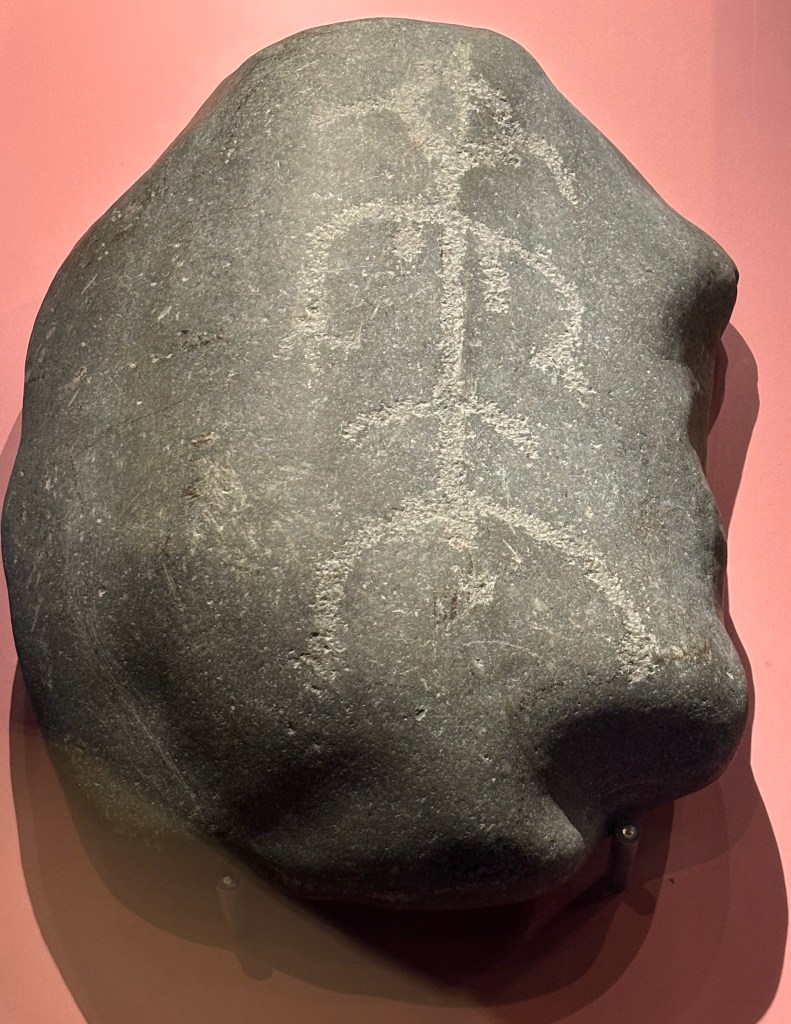
This rock carving is 4,000-5,000 years old. It was discovered around 1950, in a potato field near Alta.
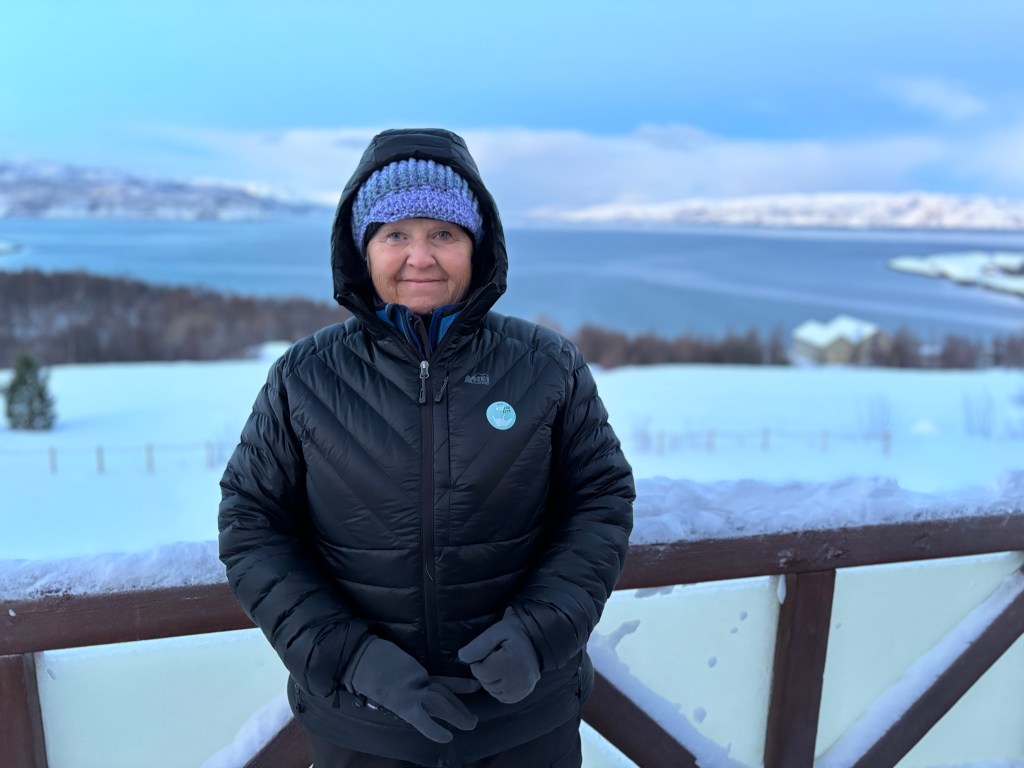
As expected, all I could see was the surrounding beauty and the museum displays.

Our second tour stop was the same church, the Northern Lights Cathedral, where we had been the night before for the organ recital.
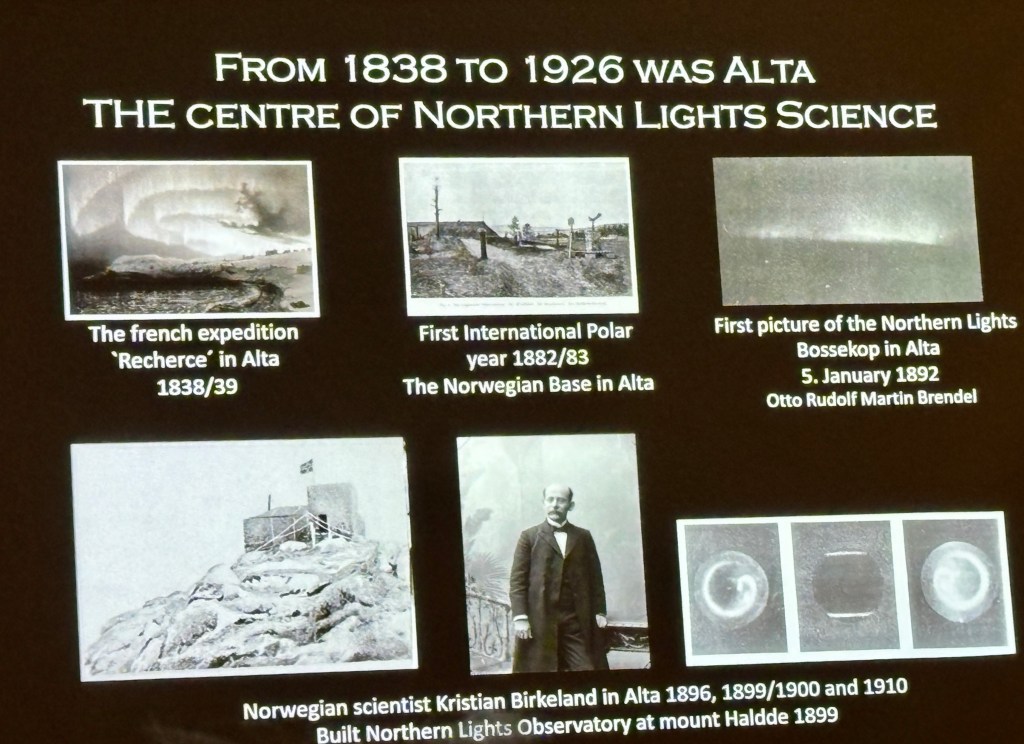
This time we went downstairs to learn more about the northern lights and how Alta is the place of origin for northern lights research. The first northern lights observatory opened in Alta in 1899.

Norwegian physicist Kristian Birkeland made a breakthrough in understanding the northern lights phenomena in the late 1800s when he proposed that charged particles from the sun trigger polar lights. He made a model to demonstrate his theory.
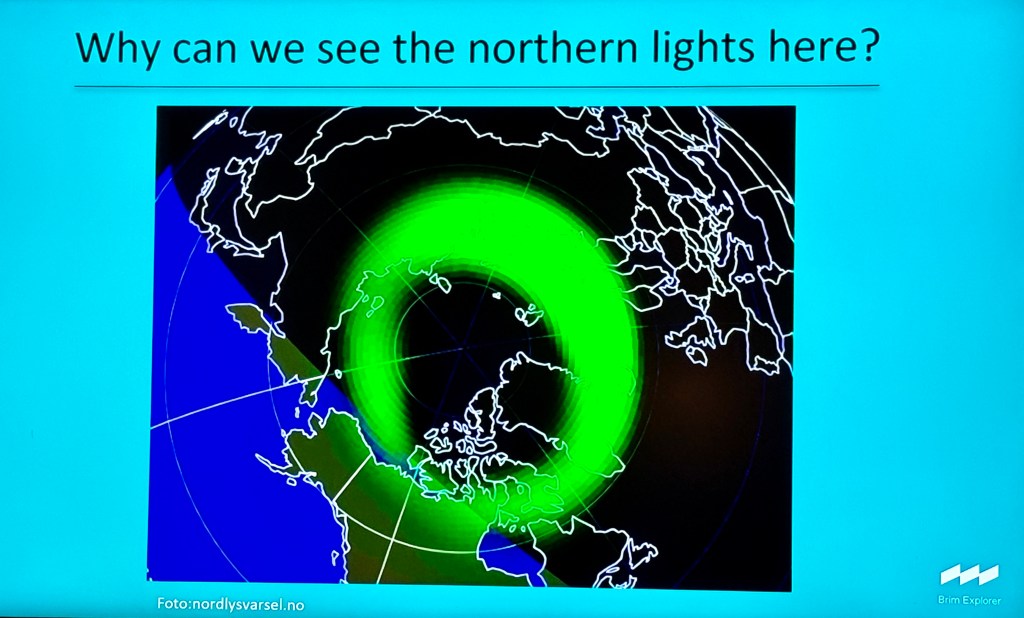
It is now known that Alta is situated under the aurora oval.
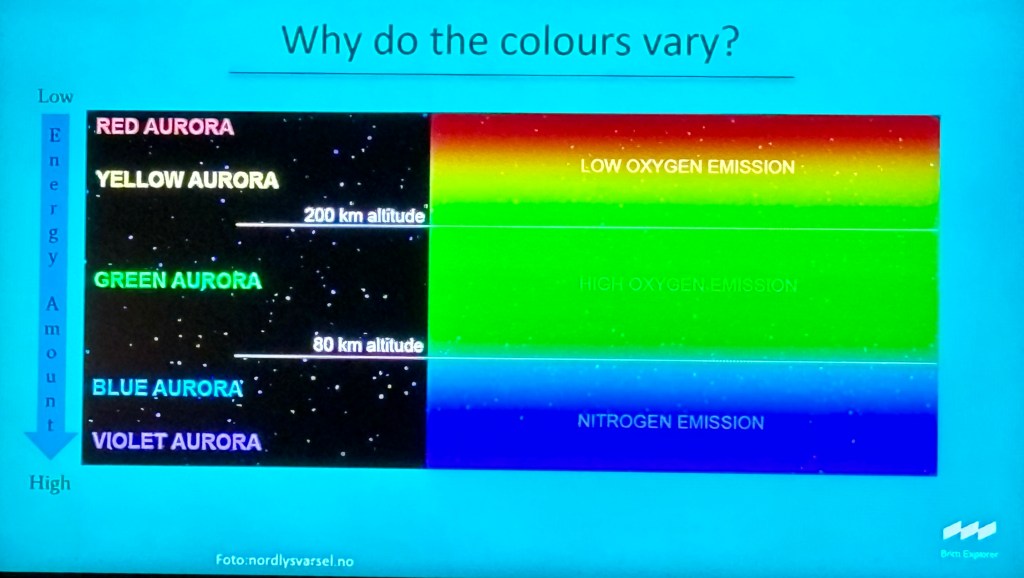
It was Galileo who named the lights the aurora borealis after he saw the red lights in the sky in Rome. It is very uncommon thing for the lights to dip that far south.
We had a third tour of the day, the last being to Pasketeun, a working slate quarry. One hundred and fifty people are employed at the site.
Although we saw some products made of slate, the purpose of our visit was to be away from the city and have the opportunity to see more northern lights.

The Sami family we met yesterday were there with a warming lavau and a couple reindeer.

We had yet another good presentation about the lights but not a lot of real opportunity to see the real thing until the end.
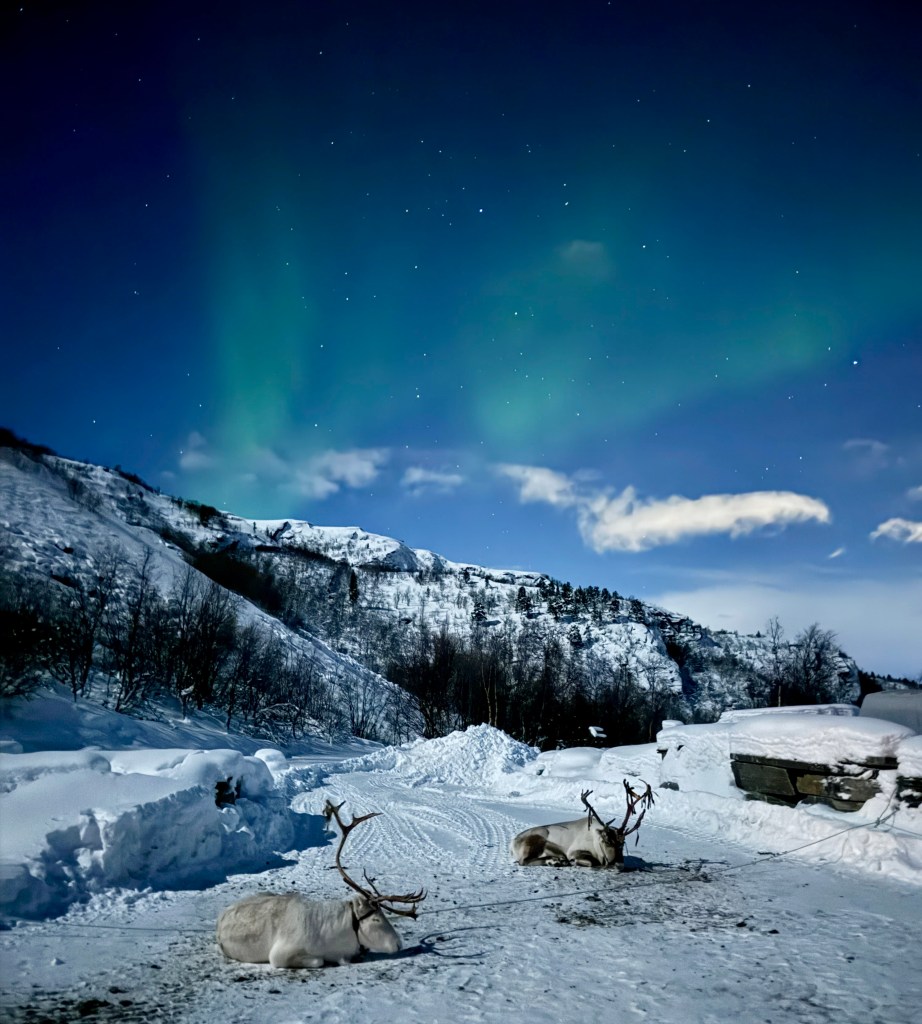
We were trying to do artsy shots with the reindeer while we waited for the lights to intensify!

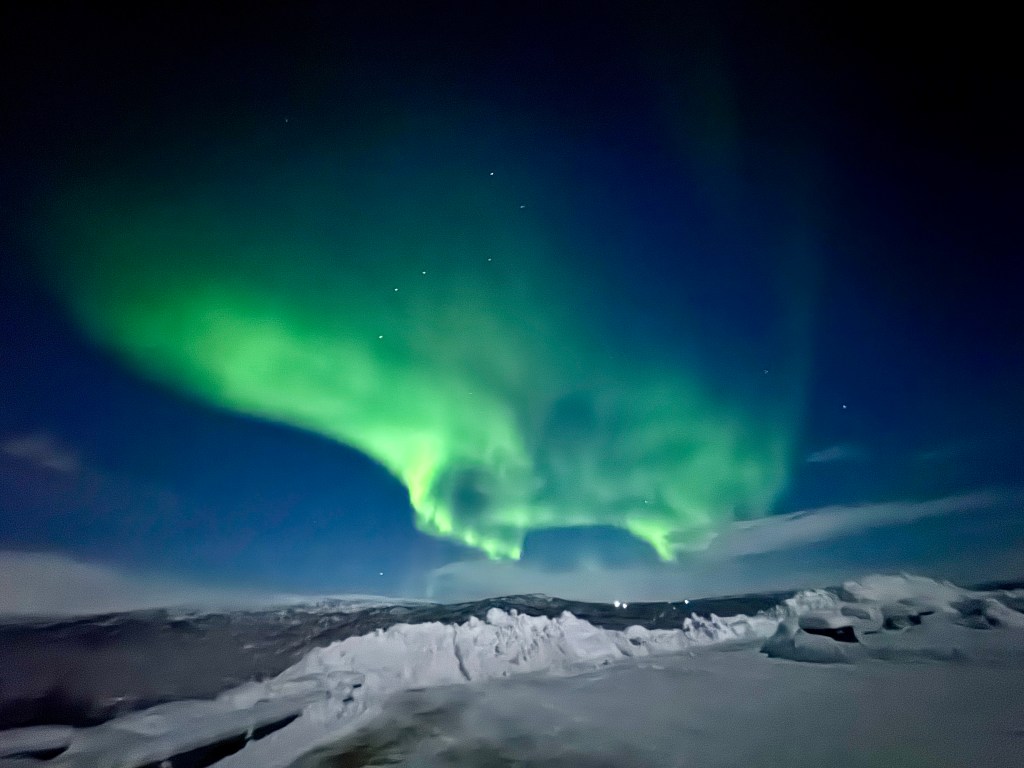
Flynn’s tour came to Pasketeun just before we left.
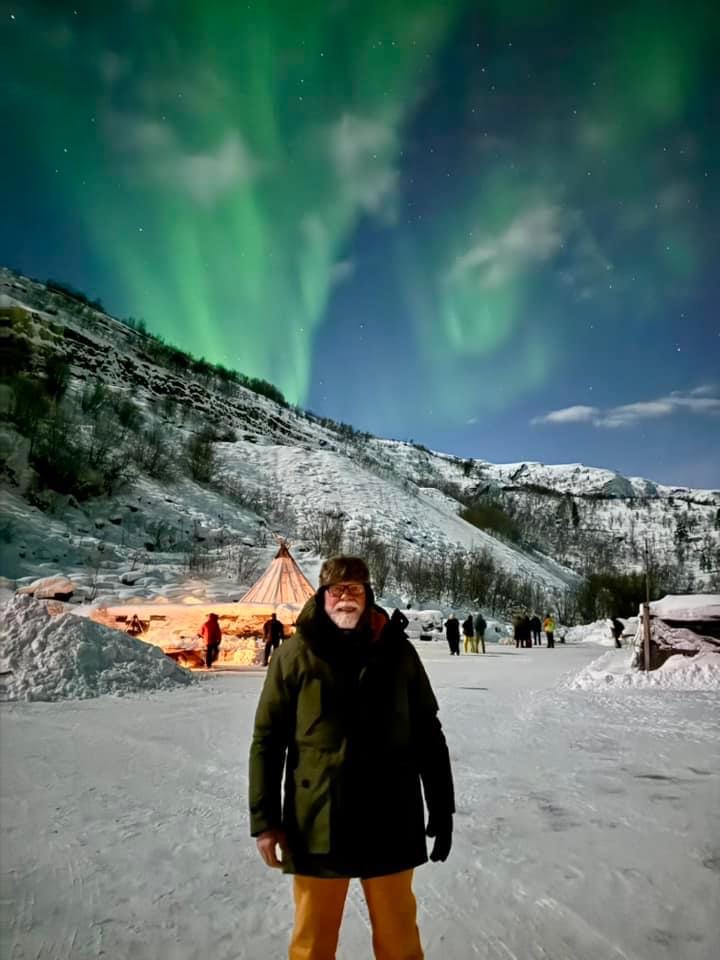
His timing was much better than ours as he had some wonderful light opportunities.

These are his pictures.

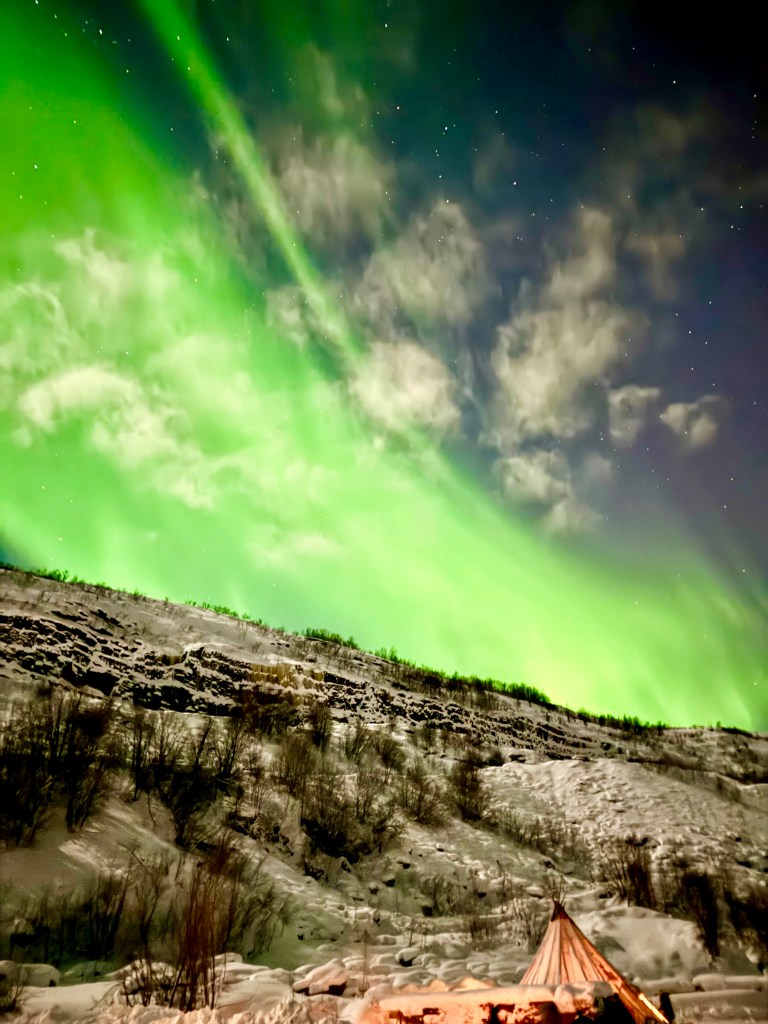
No worries that Flynn got the better light show. We were more than satisfied with the lights we saw on this trip overall and he shares! Also, we were warm and comfortable back on the ship hours before he got back.

When we arrived in our cabin there was a tray with sandwiches, cakes and wine waiting for us. This was the second time this had happened when we were off the ship over the span of time when dinner was served. The first time we had been on a dinner cruise so didn’t need the extra fare, but this time their thoughtfulness was most welcome! (We were hungry enough that I forgot to take a picture before we dug in.)
Flynn, and the others on the late tour, got back onboard and we sailed away about midnight.
We were in Alta on January 20, 2024.
Next Up: The Norwegian Sea plays rough with us too!


All of your trips are such a joy to read. Thanks so much for sharing them.